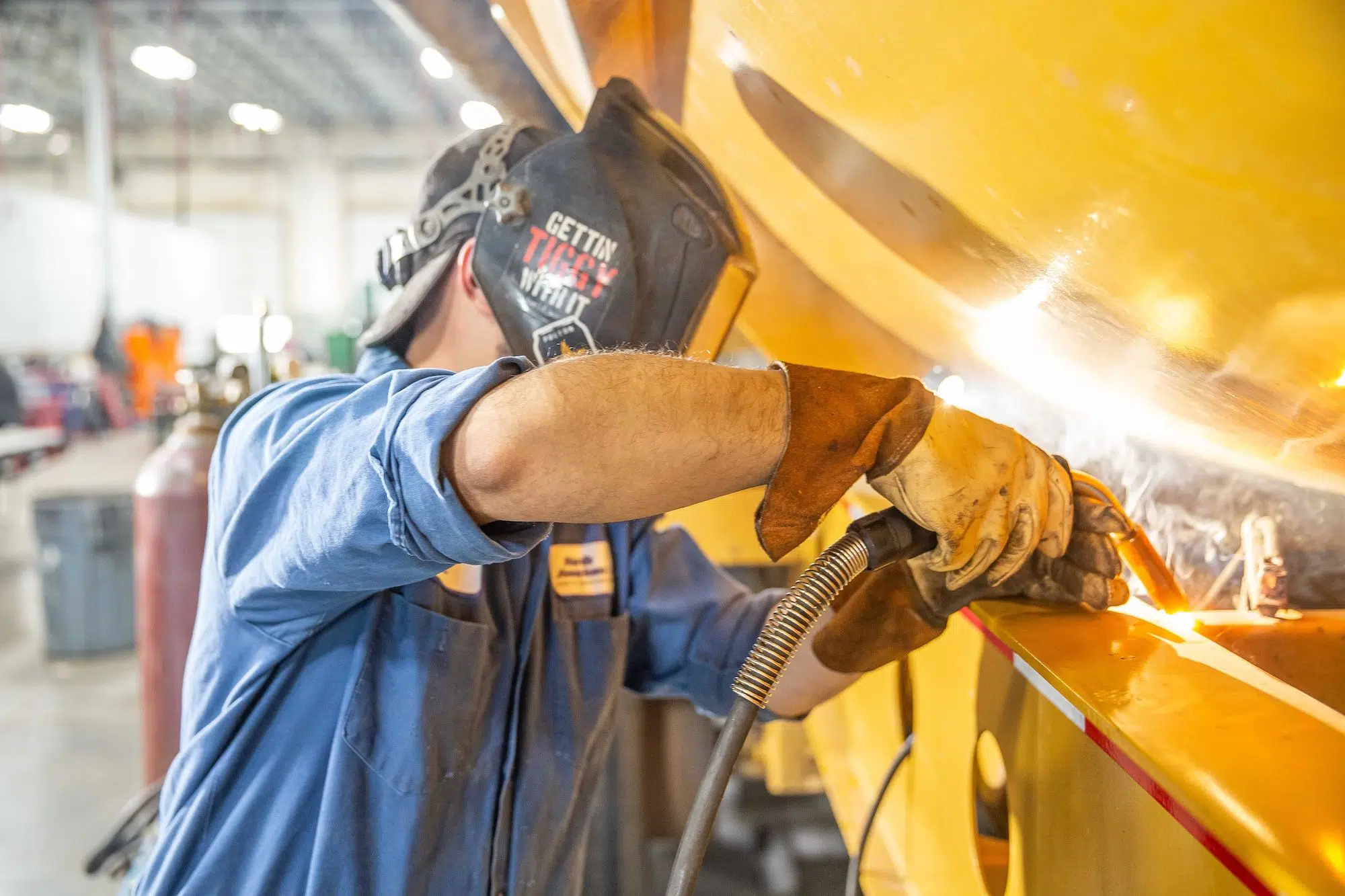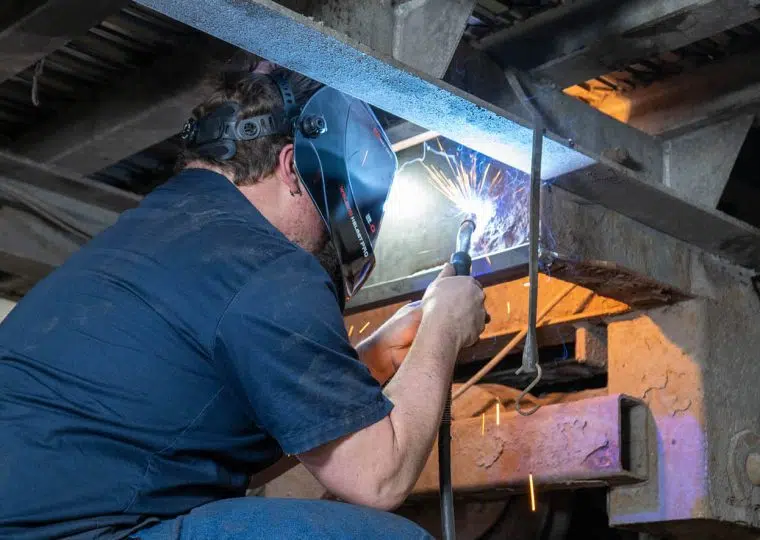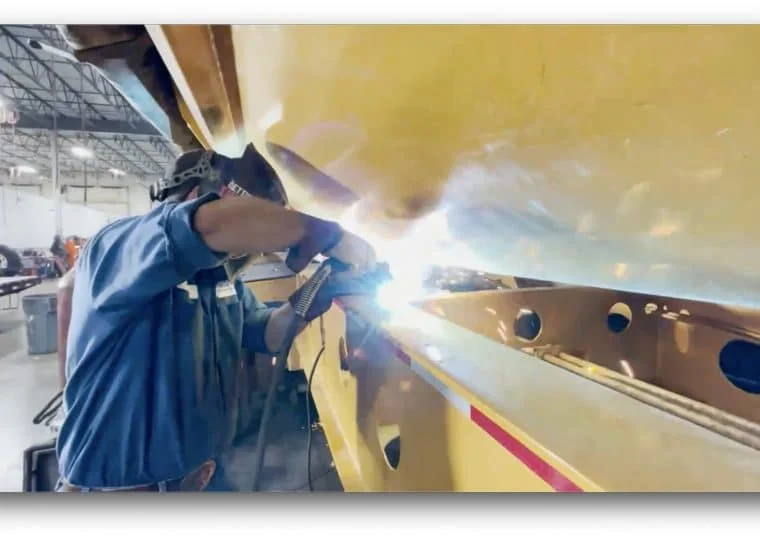If you’ve been a part of the trucking and transportation industry for any length of time, you’ve probably come across welding codes – but you might not be exactly sure what they’re all about.
Well, in a nutshell, welding codes are a set of written standards that have been developed by professional organizations including the American Welding Society, the American Petroleum Institute, the American Society of Mechanical Engineers, and the American Society for Non-Destructive Testing. These codes cover a wide variety of welding scenarios and outline the factors that go into making an acceptable weld for each one.
Essentially, they exist to provide a roadmap and a uniform way of approaching welding that takes into account best practices. Over time, these codes have helped improve not only the skills of welders themselves but also the equipment and processes that go into safe and successful welding.
For the purposes of this blog, we’ll be focused on two of the most common welding codes associated with the trucking industry – TIG and MIG. We’ll explore what they are, their key differences, when to use them, and the benefits and drawbacks of each one. By the time you’re done reading, you’ll be able to talk welding codes with the best of them, which will no doubt make you the most popular guest at your next dinner party!
 What is TIG welding?
What is TIG welding?
Tungsten Inert Gas (TIG) welding – which is also sometimes referred to as Gas Tungsten Arc Welding (GTAW) is an arc welding process that produces the weld with a non-consumable tungsten electrode. This type of welding gained a foothold in the 1940s and became a popular replacement for gas and manual metal arc welding. Additionally, it shepherded in more widespread acceptance for the use of aluminum in high-quality welding and structural applications.
What is MIG welding?
Metal Inert Gas (MIG) welding, also known as gas metal arc welding (GMAW) is an arc welding process that uses a continuous solid wire electrode that’s heated and then loaded into the weld pool from a welding gun. It was first patented in the U.S. in the late 1940s for welding aluminum and, for a variety of reasons that we’ll explore below, quickly found a following across the globe.
When to use TIG vs MIG
One of the key factors in determining whether to use TIG or MIG is the size of your project. MIG welds tend to be better fits for larger projects using thick metals that need longer, more continuous runs. TIG welds, on the other hand, work best for smaller, more detail-oriented projects using thinner metals where precision is of the utmost importance. Additionally, if you have a project that requires cranking out a lot of materials in a short amount of time, MIG welding is going to be the better option.
Advantages and Disadvantages of TIG Welding
TIG welding has a number of advantages starting with its high quality and precision, both of which are very important in creating parts for the trucking and transportation industry. The reason that TIG welding can be so intricate and precise is because the operator has greater control over all aspects of the process including the heat of the arc, the welding gun and the speed and the depth of the weld. TIG welding also tends to be a cleaner process and is better for the environment.
However, TIG welding does have a few disadvantages. It’s a slow process, it can be costly and it’s more difficult for inexperienced welders to learn.
Advantages and Disadvantages of MIG Welding
Just like TIG welding, MIG welding has plenty of advantages in its own right. MIG welding can be used on thicker materials that are very much in demand in the heavy-equipment world such as stainless steel, steel and aluminum.
It can also be used to weld two different materials together. But two of its biggest advantages are that it is faster and in turn, more cost effective, making MIG welding the method of choice for many large scale industrial operations. Plus, as opposed to TIG welding, learning the basics MIG welding only takes a week or two. As for the disadvantages of MIG welding, there are a few. MIG welding is not as precise as TIG welding, nor is it as clean. In fact, it can create smoke, fumes and even sparks, which could lead to a dangerous situation.
Which method is more difficult?
The highly technical nature of TIG welding makes it more difficult to learn than MIG welding. In TIG welding, operators have to be able to feed a separate filler material onto the weld with one hand while operating the torch with another. Additionally, they also have to use one of their feet to operate a pedal to control the heat of the arc. Talk about a lot of moving parts!
Which method is safer?
When it comes right down to it, both TIG and MIG welding come with potential risks and that’s why it’s critical for welders – and the people who employ them – to adhere to strict safety and training measures. Welders should always wear personal protective equipment (PPE) such as safety goggles, fire resistant clothing, gloves and flame-proof skull caps.
Workspaces should be well ventilated and stocked with first aid supplies, fire blankets and extinguishers. And welding machines should be properly installed and grounded.
Which method is stronger?
Because TIG welding can create welds that are cleaner and more precise than those of their MIG welding counterparts, it has the edge when it comes to strength. However, that’s not to say that MIG welding methods can’t be used to produce durable welds.
By cutting or grinding a V groove into a joint before welding, you can get better penetration. Plus, adjusting your torch position and travel speed can also go a long way in increasing the strength of your weld.
Trust Your Fleet To The Welding Experts At North American Trailer
When you need welding services you can trust, the team at North American trailer is here for you. Our welders are certified in a variety of methods and they have the expertise to handle all your truck and trailer welding and repair needs so you can stay on the road safely.
We’ve been proudly serving the trucking and transportation community in the upper midwest for more than 40 years and we can’t wait to show you why we’re one of the most trusted names in the industry. Contact us today to experience the North American Trailer difference.


 What is TIG welding?
What is TIG welding?